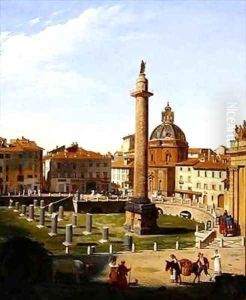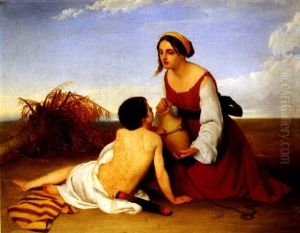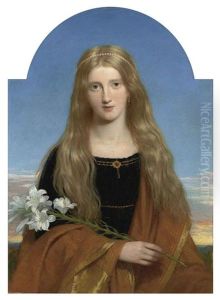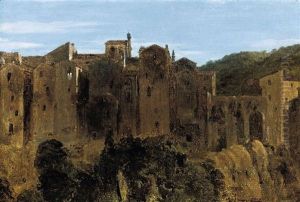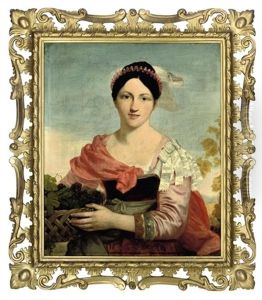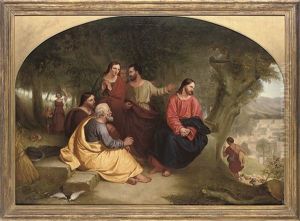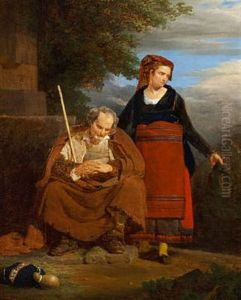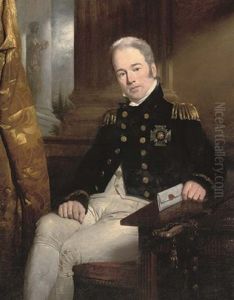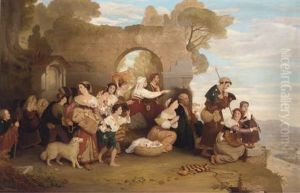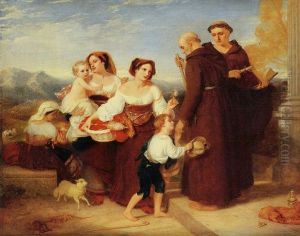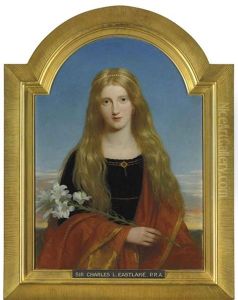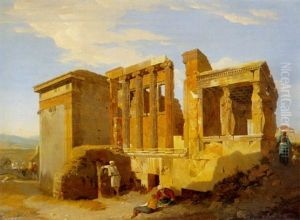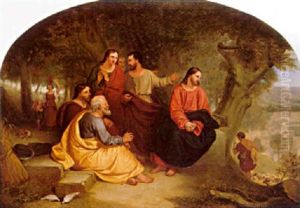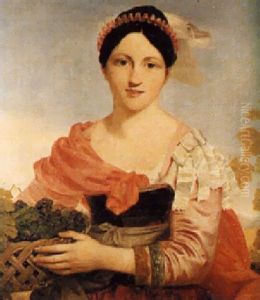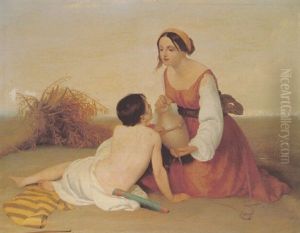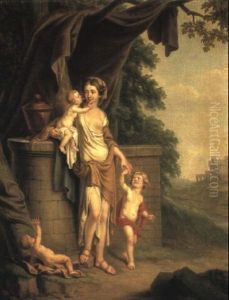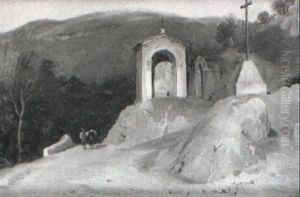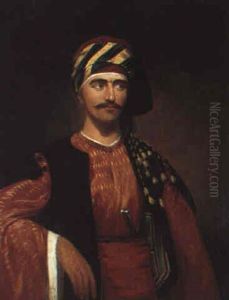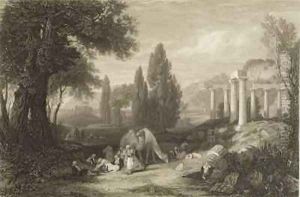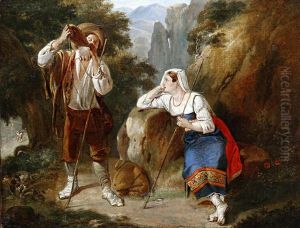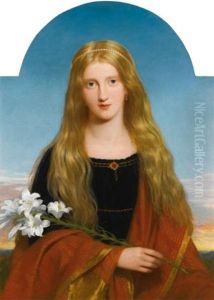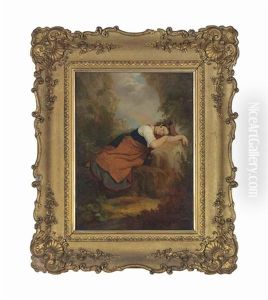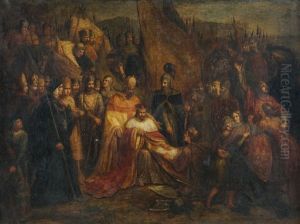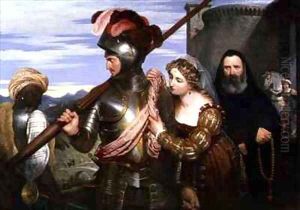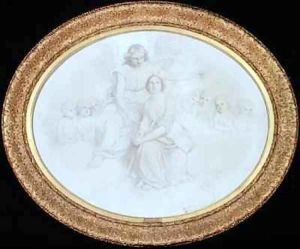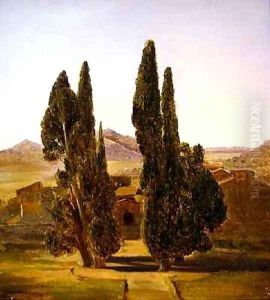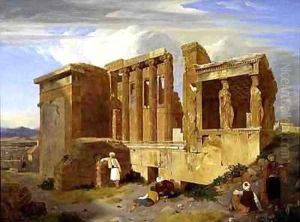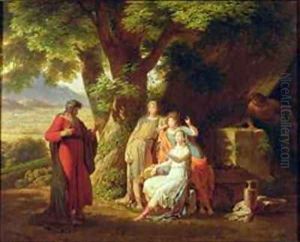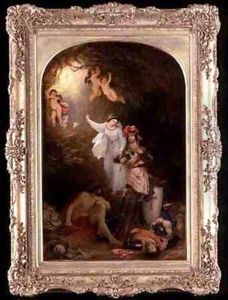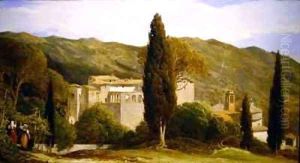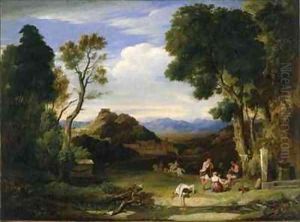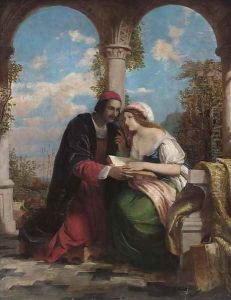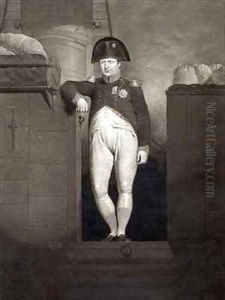Sir Charles Lock Eastlake Paintings
Sir Charles Lock Eastlake was a pivotal figure in the British art scene of the 19th century, not only as a painter but also as an art administrator and scholar. Born on November 17, 1793, in Plymouth, Devon, he showed early promise in the arts and subsequently trained at the Royal Academy schools in London. His artistic journey took him across Europe, notably to Italy, where he was deeply influenced by the works of the Old Masters, integrating their techniques and themes into his own paintings.
Eastlake's work as a painter was marked by his keen attention to detail, vibrant use of color, and a classicist approach that was somewhat at odds with the emerging Romantic sensibilities of his time. Despite this, he achieved considerable success and was well-regarded by his contemporaries. His paintings often depicted historical and mythological themes, executed with a meticulousness that reflected his scholarly approach to art.
Beyond his contributions as an artist, Eastlake's legacy is most significantly marked by his roles in the British art establishment. In 1850, he was appointed Secretary of the Royal Commission on the Fine Arts, playing a crucial role in the decoration of the new Houses of Parliament. His expertise and vision were further recognized when he became the President of the Royal Academy in 1850, a position he held until his death. His presidency was noted for its efforts to reform the Academy and elevate the standards of art education and exhibition.
Perhaps his most enduring contribution to the art world was his tenure as the first Director of the National Gallery, London, from 1855 until his death in 1865. In this role, Eastlake was instrumental in establishing the Gallery as a world-class institution. He implemented professional standards for the care and display of the collection and was proactive in acquiring works by both Italian Renaissance masters and his contemporaries, thus significantly enriching the Gallery's holdings.
Eastlake was also a respected art historian and theoretician. His translation of Johann Wolfgang von Goethe's theory of colors and his own writings on the technical methods of the Old Masters were influential in shaping Victorian attitudes towards art. His scholarly work laid the groundwork for future art historical research and conservation practices.
Sir Charles Lock Eastlake died on December 24, 1865, leaving behind a legacy that touched many aspects of the British art world. His contributions as an artist, administrator, and scholar have had a lasting impact, ensuring his place as a key figure in the history of 19th-century British art.
